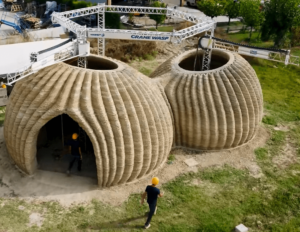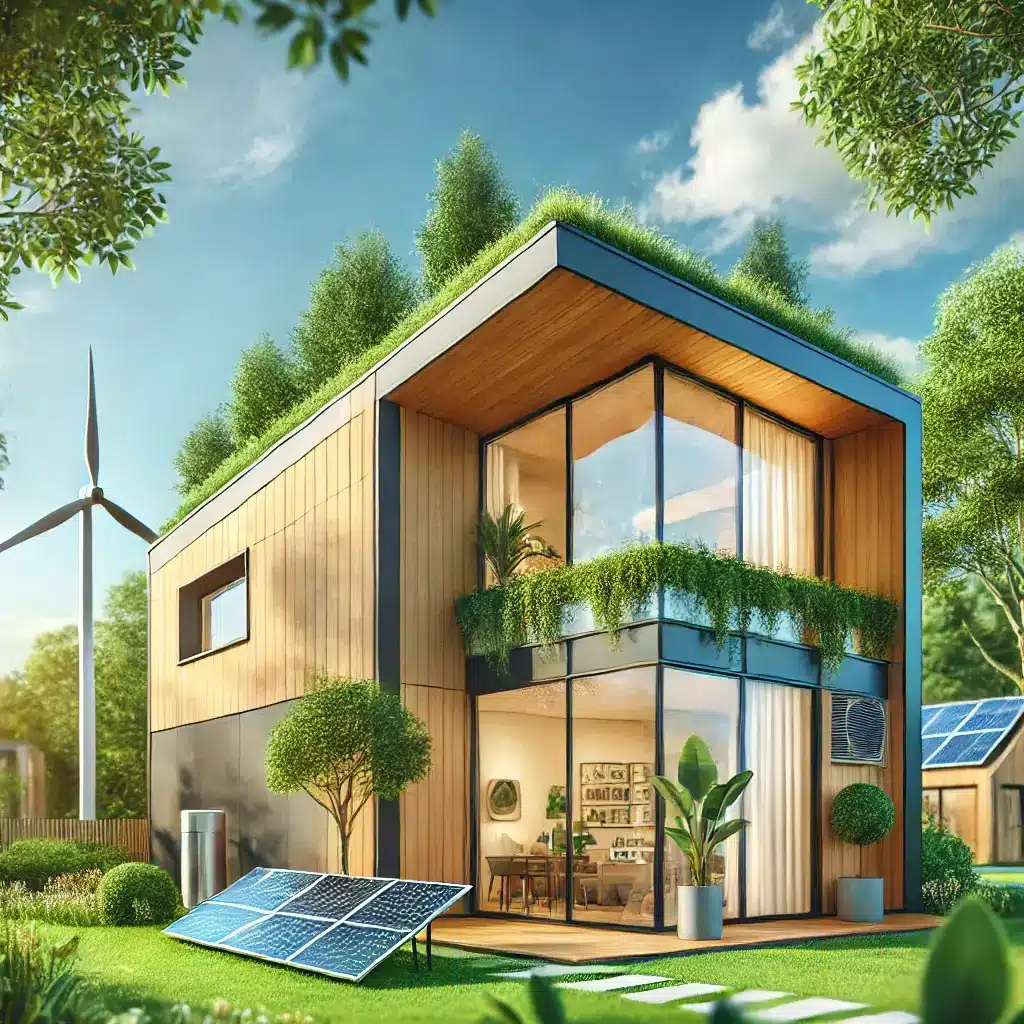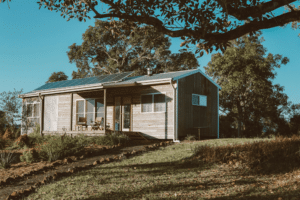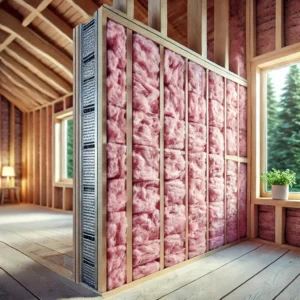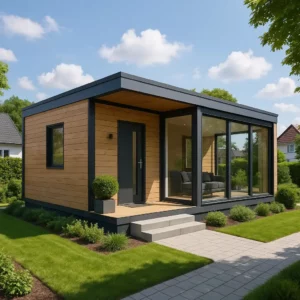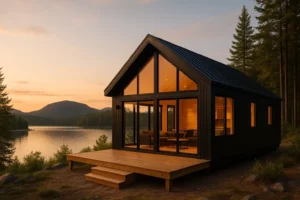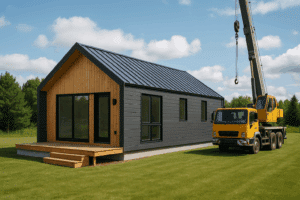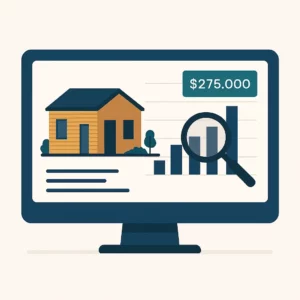A sustainable home relies not only on quality materials, but also on low energy consumption over the long term. Modern prefabricated homes excel in terms of insulation and energy efficiency. Designed for northern or mountain climates, they feature high-performance thermal envelopes suited to harsh winters and hot summers. For example, some buildings in Quebec are Novoclimat certified, guaranteeing high-quality insulation, with energy savings of up to 20 %.
This translates into thick walls with multiple layers of insulation, well-ventilated roofs, and raised floors. Windows are often triple-glazed with reinforced insulation, reducing heat loss in winter and keeping the rooms cool in summer. Thermal bridges, which allow heat to escape, are avoided through precise prefabrication and the addition of thermal breaks.
Energy efficiency is also reflected in aesthetic innovations, such as green roofs, which naturally insulate, promote biodiversity, and retain rainwater. These roofs provide protection from the sun in the summer and provide additional insulation in the winter. Additionally, some models incorporate dual-flow ventilation systems with heat recovery, ensuring clean air and reducing heat loss. These prefabricated homes are ready to meet current and future energy challenges.
Modern conveniences in prefabricated homes
Home automation and smart homes
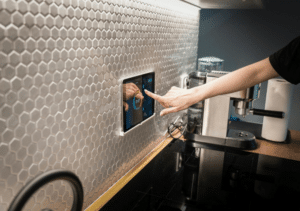
The prefabricated home of 2025 stands out for its built-in intelligence. Home automation provides comfort, security, and energy savings on a daily basis. Voice-activated lighting, remotely programmable heating, and door-opening alerts: these technologies are no longer science fiction. Sensors, wiring, and connected equipment are integrated from the factory, making installation seamless. Once the house is installed, all you need to do is connect an app to control everything.
This automation improves comfort and energy efficiency. Smart thermostats adjust the temperature room by room, avoiding heating unoccupied spaces. Connected LED lighting automatically turns off or adjusts its intensity based on natural light.
By 2025, home automation will become the norm in high-end prefabricated homes. Water and energy management, automatic watering based on the weather, and real-time monitoring of electricity consumption are all optimized. With the addition of home batteries, energy produced on-site can be stored for use during peak hours, reducing dependence on the grid. The result: a smart, economical, and eco-responsible home.
Integrated renewable energies
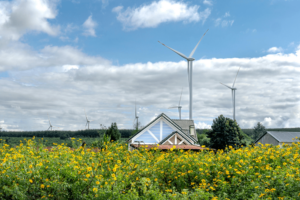
Prefabricated homes in 2025 are increasingly incorporating renewable energy. Photovoltaic panels, integrated solar tiles, and thermal panels for hot water transform roofs into mini power plants. With falling costs and improving solar efficiency, even small installations can cover a significant portion of energy needs. Some homes even include a lithium-ion battery to store the electricity produced and ensure partial or even complete autonomy.
Other solutions complement this system. Timber-framed houses can accommodate a pellet stove or a biomass boiler, providing low-emission renewable heating. In windy areas, small domestic wind turbines provide additional green electricity. Rainwater harvesting is also becoming a common option: the collected water is filtered and stored to supply toilets, washing machines, or outdoor watering, reducing drinking water consumption.
Integrating these features from the design stage ensures an optimized and seamless installation. A modern prefabricated home can thus leave the factory ready to connect its solar panels and rainwater tank, making its occupants informed consumers and energy producers.
Modular and scalable design
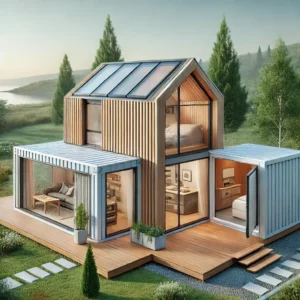
Flexibility is at the heart of the prefabricated concept, with modular and scalable designs. Rather than moving, simply add a module or reconfigure the existing space to adapt to changing needs: an additional bedroom, a separate office, or an extension. The framework and connection points are designed to easily accommodate these transformations, making expansion a key trend in 2025.
The interior design follows this logic with movable partitions and modular furniture. A large space can be divided into two bedrooms with a sliding wall, or conversely, rooms can be joined to create a vast living room. Removable mezzanines, modular storage, and modular sofas optimize every square meter.
In 2025, modularity reaches a new level: housing becomes scalable. Some builders are going even further by making homes disassemblable and transportable, allowing their modules to be reassembled elsewhere or partially resold. This unprecedented agility is made possible by modern prefabricated engineering.
Conclusion
Prefabricated homes have continued to evolve to meet market expectations. The factory is becoming the nerve center of construction, with AI and robots accelerating production and improving quality. Digital technology and 3D printing are pushing the boundaries of design, while sustainability is becoming increasingly important: bio-sourced materials, optimized recycling, and high energy efficiency are making these homes greener and healthier.
Offering comfort equivalent to, or even superior to, traditional construction, they are intelligent, energy-independent, and scalable. Long perceived as standardized, modular construction is now at the forefront of innovation. With increasing industrialization, costs could fall, making these homes more accessible, while engineering advances will continue to push their limits.
Choosing a prefabricated home in 2025 means participating in a dynamic of continuous innovation, where performance and scalability are combined. More than just an alternative, it's becoming the solution of the future, combining technology and ecology to build the homes of tomorrow.

